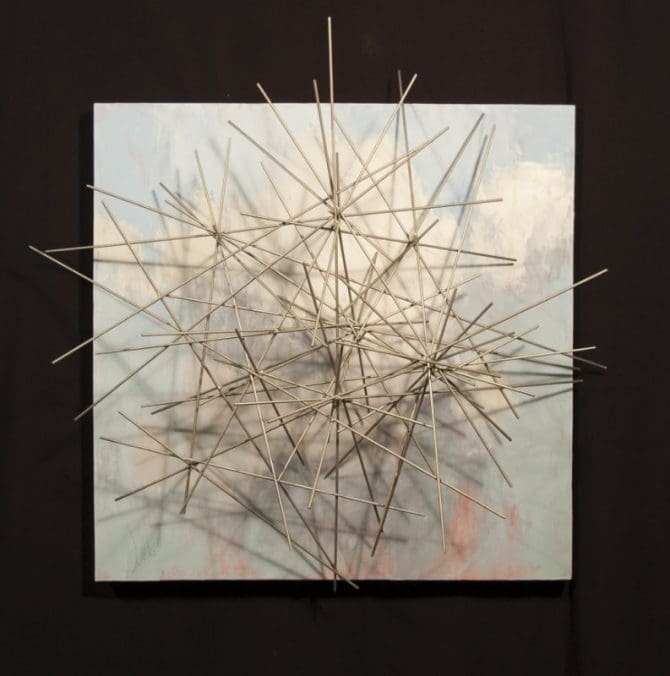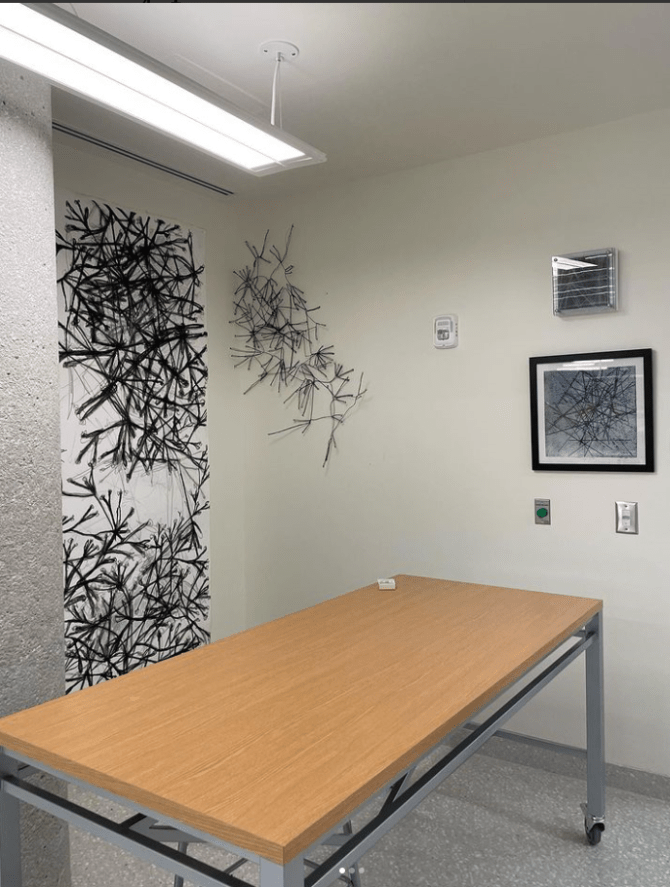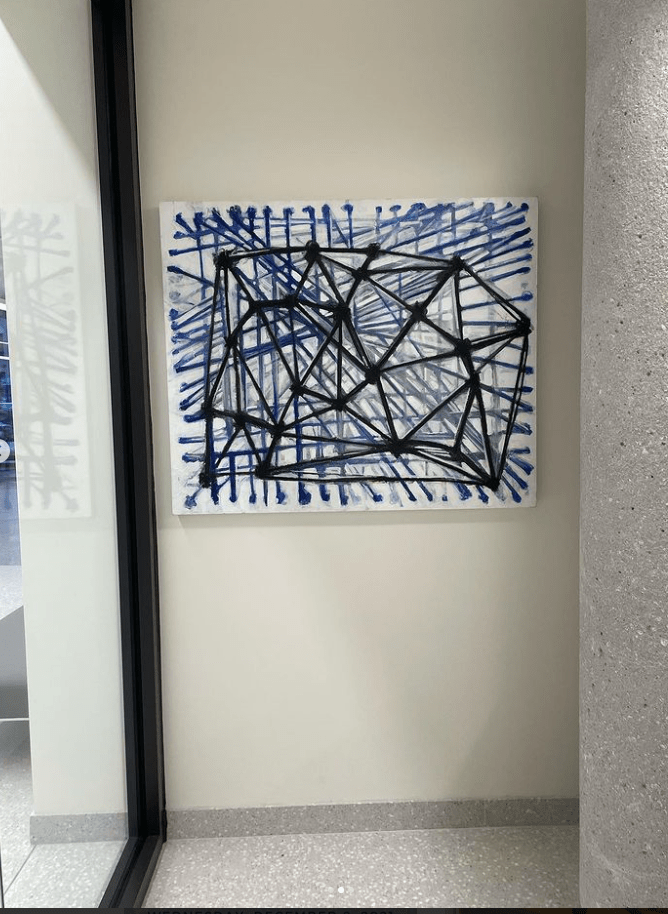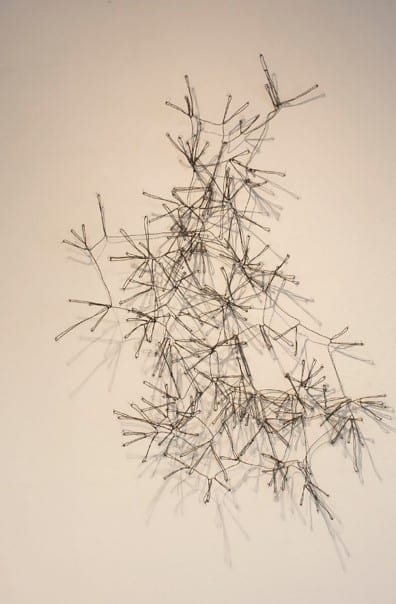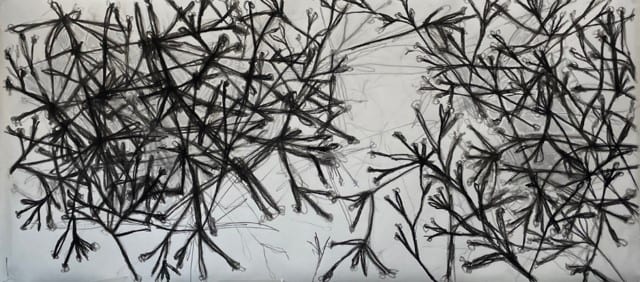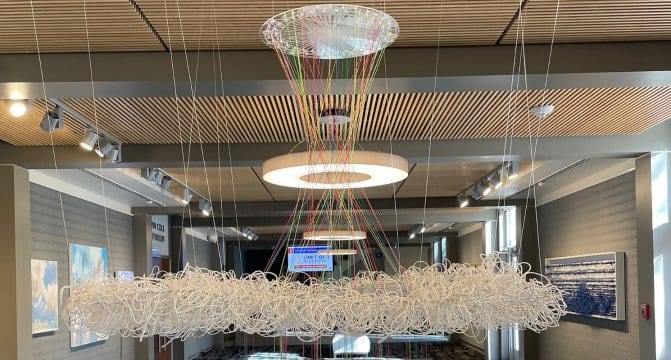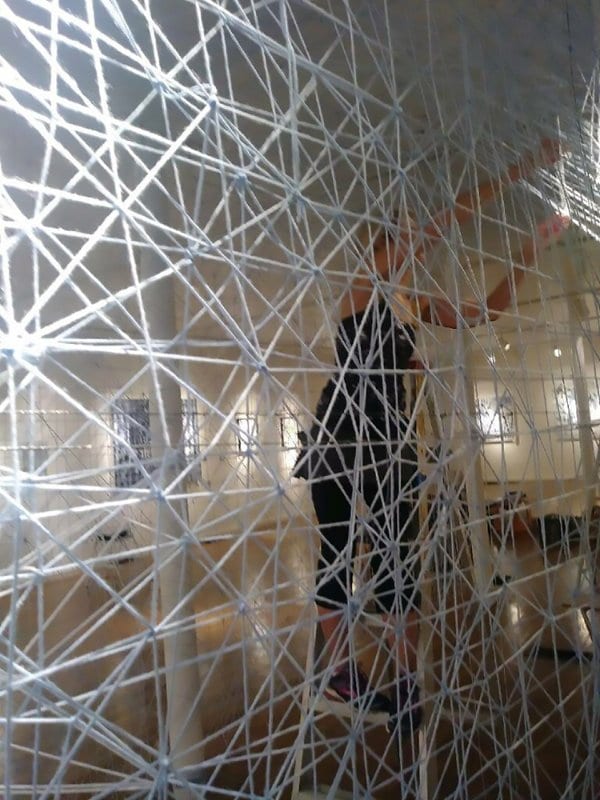SABRE ESLER

Website: www.sabreesler.com
IG: @sabreeslerfineart
Sabre Esler is an Atlanta based multi-disciplined artist. She creates works and environments exploring the connections between emotions, thoughts and reality. Her latest body of work is inspired by the book “The Jazz of Physics” which explores the relationship between physics and creativity, particularly improvisation, to find elegant solutions.
Esler, an Ohio native, graduated from Miami University, Oxford, OH with a BFA in graphic design/illustration and a minor in biology. She continued her art career, first in advertising and design and began a fine art career after leaving the corporate world. Esler received her MFA in painting from Savannah College of Art and Design (SCAD) in 2015. She taught Foundation Studies at SCAD, (Atlanta Campus) 2018. In 2020 she began teaching at Georgia Perimeter/GSU (Dunwoody Campus). She has had solo shows in Boston, Charleston, Knoxville, and Atlanta.
Her work has been exhibited at Art Basel the last three years. Twice she has been a Hambidge Fellow. Most recently, she is a recipient of the Atlanta Contemporary Studio Artist Award in 2020. Esler has completed four installations in the Atlanta area, taking her sculptures to room size works. Her work can be found in the public collections of Miami University, Tufts University, Georgia State University, The Federal Reserve Bank, Fulton County Arts Council, City of Atlanta, and corporate collections of Ritz Carlton, Cognia, Acoustic, Trammel Crow, SunTrust Bank, Hyatt Hotels, Oglethorpe Bank, Preferred Office, Georgian Bank, Atlantic Capital Bank, Waycross Bank & Trust, Boardwalk Inn at Wild Dunes, Hilton Hotels, Schell, Bray, Aycock, Abel & Livingston, Crowell & Moring, AdvantEdge Executive Offices, Reaction 35, The Lofts at Capitol Quarters, Hilton Hotels, as well as over 500 private collections.
VIRTUAL GALLERY
central artist corner
VISIT US
Hours & Information



